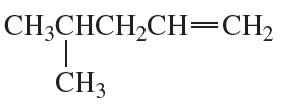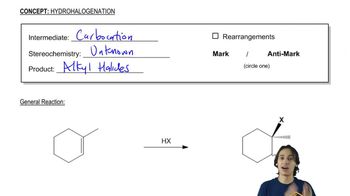Draw the products of the following reactions. If the products can exist as stereoisomers show what stereoisomers are formed.
h. cis-2-butene + HBr

 Verified step by step guidance
Verified step by step guidance Verified video answer for a similar problem:
Verified video answer for a similar problem:



 4:07m
4:07mMaster General properties of hydrohalogenation. with a bite sized video explanation from Johnny
Start learning